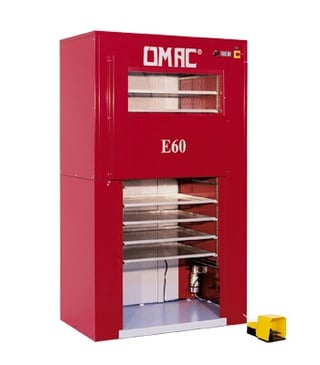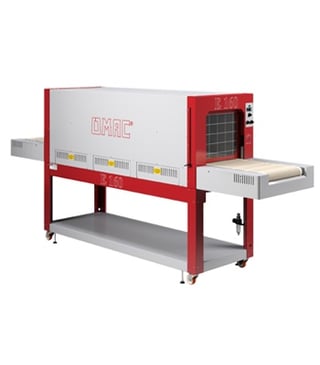Most people's main problem is time. Time is never enough. We're always trying to save it, because this means having more time for ourselves, for our projects, or for increasing productivity in our company.
Water-based products are fantastic, but they all have the same limit: the drying time. Drying time is normally longer than solvent-based products, as mentioned in the previous post.
Anyway, technology continues to develop solutions to overcome this limit. The most common solution to accelerate the drying phase is to use a specific oven.
As discussed in the previous post, the drying phase is the period during which the volatile part of the paint (water or solvent) evaporates from it. This process is influenced by temperature and relative humidity.
The ovens developed for this purpose usually consist of a cabin where there is an adjustable temperature and an air flow inside. Increasing temperature means a more rapid water evaporation and the air flow helps to maintain a low humidity inside the cabin.
Then the leather items can usually be placed on a tray or on a transverse tape, depending on the type of oven (vertical or horizontal).
During our development in leather edge paint, we worked in collaboration with OMAC, one of the most famous oven producers for leather manufacturers. In their factory we ran several tests on our leather edge paint, using these test results to write down a DRYING- TIME TABLE referring to the most common ovens Mod. E60 and Mod. E160.
 |
 |
We considered two main factors, the temperature and the leather edge width: starting from these variables we can now have a clear idea of the leather edge drying time.
Leather Edge Width has a great influence on the drying time: we used several different widths, and we can now say that a leather edge width lower than 1.5mm usually has a drying-time that can vary from 12 up to 30 mins, while a width between 1.5mm and 3.5mm has a drying-time that can vary from 24 up to 30 mins. Depending on the type of oven used and the temperature set .
Temperature is a parameter you have to be very careful with: initially you may think that the higher the temperature, the quicker the drying-time will be. This sentence is only partially correct. In fact also the temperature has a limit that can be set, overcoming this limit will cause the appearance of small humps on the leather edge surface. This phenomena is caused by quick drying and consequently there is some physical movement over the edge surface. It's like burning a cake!
Some advice for the perfect drying of the leather edge: refer to the drying-time table, choose your ideal setting, test it, adjust it and re-test again.


